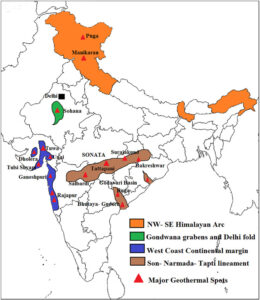GS3 – Environment

Context:
The Uttarakhand Cabinet has approved the Geothermal Energy Policy 2025 as part of its broader push towards clean and sustainable energy.
Key Highlights of the Policy:
- Purpose:
Promote energy security, reduce carbon emissions, and encourage community development via geothermal energy. - Tenure:
Projects to be allotted for 30 years from commissioning. - Allocation:
Both PSUs and private players can bid competitively for project rights.
National Geothermal Energy Policy Goals:
- Objective:
Build a safe, sustainable, and secure geothermal energy sector in India. - Target:
Generate 10 GW of geothermal energy by 2030. - R&D Focus:
- Explore geothermal energy potential.
- Promote power generation and geo-exchange pumps for heating/cooling.
- Global Collaboration:
Engage with countries like the USA, Indonesia, Philippines, Mexico, and New Zealand to:- Attract foreign investment.
- Facilitate technology transfer.
- Enable capacity building.
India’s Geothermal Potential:
- Source:
Natural heat from hot springs. - Identified Sites:
381 thermally anomalous locations, as per Geological Survey of India (GSI).
- Potential Output:
Approximately 10,600 MW, capable of powering 10 million households. - Flagship Project:
Puga Valley Project in Ladakh – India’s first and the world’s highest geothermal project (14,000 ft elevation).




